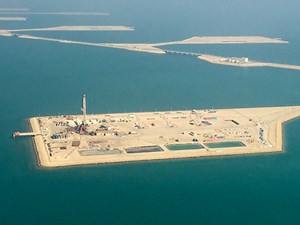Oil and gas in the capitals
Oil prices are crushed, and the only country that can change oil market direction is Saudi Arabia. The case for a production cut is compelling, especially given that the Saudis have already achieved most of their economic objectives in regaining market share in crude, petroleum products, NGLs and petrochemicals. Any political objectives are almost impossible to achieve, specifically in regard to Iran and Russia. If Saudi Arabia does not cut oil production, it loses the strategic advantage of its spare capacity in the short term. In the mid and long terms, it loses its ability to control the oil market, while its economy deteriorates.

Saudi Arabia has lost its strategic importance in the oil market to consuming countries in recent months. Saudi Aramco’s high oil production reduced the Saudi spare capacity, while it increased oil stockpiles in the consuming countries to a record high. The cushion, in case of an interruption, is no longer in Saudi Arabia, it is in the consuming countries. Reversing this situation requires the Saudis to cut production.
Potential consequences of current policy. If the Saudis continue their low oil price policy, the possibility of prices exceeding $100/bbl in the coming years becomes higher and higher, as supply shortages become larger than the Saudi spare capacity. The last thing that the Saudis want is an oil price approaching $100/bbl. The second phase of the shale revolution will most likely be unbeatable, since the pain threshold for the Saudis and other OPEC members will exceed the cash cost of most shale oil producers by then.
The end of growth in U.S. shale oil production should terminate the oil price war. This is especially true, given that the collateral damage within Saudi Arabia and other OPEC countries is significant, as the price war has evolved from Saudi vs. shale to OPEC-on-OPEC competition. As production peaked in several OPEC countries, they resorted to price cuts that wreaked havoc on their economies. All OPEC members, including Saudi Arabia, are at the “pain price” threshold or below. Despite all of the sugar coating, the Saudi economy, along with the people of Saudi Arabia, is suffering. In other words, the uncontrollable fire started with a controlled burn! A production cut should act as a deluge that will drown the fire and end the extremely bearish sentiment in the market. A production cut should rejuvenate the Saudi stock and real estate markets, where most Saudis are invested, help some OPEC governments service their debt, and pay government employees.
Large non-OPEC growth not in the cards. The fear that the increase in oil prices will increase non-OPEC production is, again, exaggerated. As oil prices rise, the first order of business for U.S. shale producers is to pay debt and clean their balance sheets. In addition, maintaining current U.S. oil production requires a price of $75/bbl or higher. Something worth noting is that it is not in the interest of the Saudis to kill U.S. shale oil production, nor its growth. It is in their interest to allow growth in non-OPEC production, at a rate that matches the growth in global demand for oil. What they do not want to see is large growth that competes with some OPEC producers. To make this happen, a production cut is needed.
The 2016 Saudi budget. The pain that low oil prices have brought to Saudi Arabia is clearly evident in the Saudi budget for 2016. While the deficit is estimated at $87 billion, the budget, itself, reminded us that the actual 2015 deficit was more than double the original estimates. The deficit would have been higher, if it wasn’t for the several fiscal measures embedded in the budget, including the gradual lifting of energy subsides. The budget was released on Monday, Dec. 28, 2015, and it called for an increase in fuel prices the following day. “Run on gas stations” was the name of the game throughout Saudi Arabia on that Monday evening and night, with unforgettable scenes of long lines of cars and trucks.
Since the Saudis do not release the oil price assumption used for their budgetary calculations, analysts estimate that the oil price used to estimate revenues is between $40/bbl and $47/bbl, depending on the daily production assumption. The price needed to balance the Saudi national budget is $70/bbl. If off-budget expenditures are included, the oil price needed to balance the budget is higher.
Does the oil price assumption in the Saudi budget mean anything to the global oil market? The answer depends on whether the Saudis view themselves as price-makers or price-takers. If they are price-makers, then the price used in the budget is a signal to Saudi’s rivals, but it is not necessarily the price that will prevail in 2016. If one believes that they are a price-taker, then they are as confused as everyone else. ![]()

- The last barrel (February 2024)
- Oil and gas in the Capitals (February 2024)
- What's new in production (February 2024)
- E&P outside the U.S. maintains a disciplined pace (February 2024)
- U.S. operators reduce activity as crude prices plunge (February 2024)
- U.S. producing gas wells increase despite low prices (February 2024)


